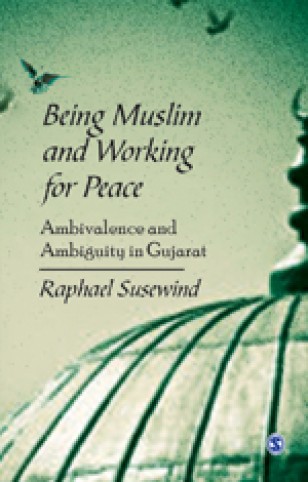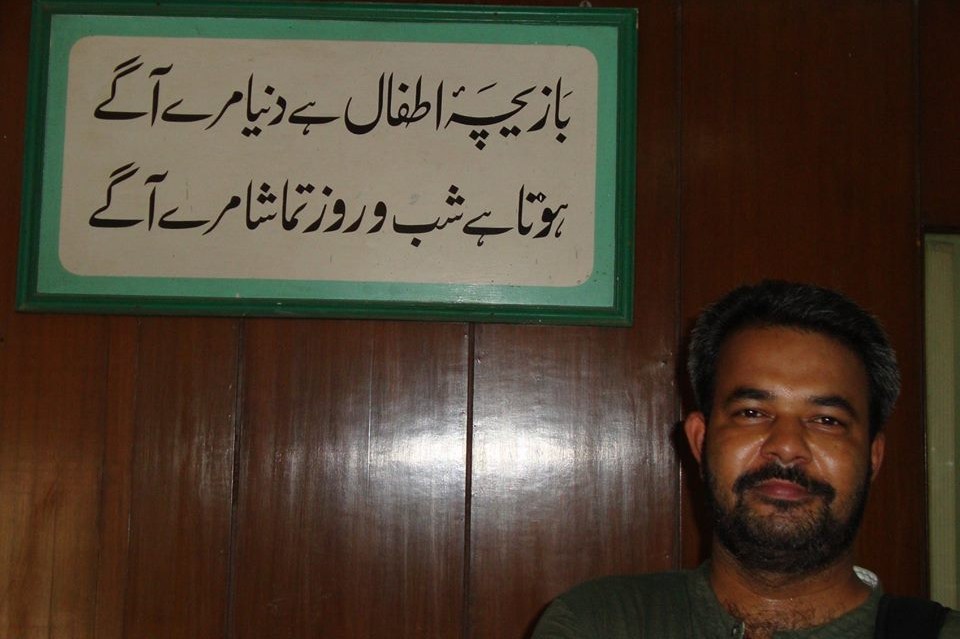A Review of Being Muslim and Working for Peace: Ambivalence and Ambiguity in Gujarat
The place of Gujarat 2002 in the history of communal violence in India in general and anti-Muslim violence in particular, will be ‘special’ in many ways. While the scale of violence was massive and the role of the State and its various agencies partisan, the response by civil society groups and media was extraordinary. Much has been written about this in the last ten years, both in academic as well as in journalistic circles. However, there was one more thing which was distinctive, in fact, quite remarkably so, from the earlier incidents of violence. This was the response of the victim community, Muslim in this case, both in individual as well organisational capacities. This time, the community worked, what can be called “beyond the celebration of victimhood”. The community, learning from previous incidents of communal violence, especially Mumbai (1992-93) worked hard not only to ensure the immediate concern of relief but is still working steadfast for the proper implementation of rehabilitation policies and above all to guarantee that the perpetrators of the violence should not go unpunished. How this happened and what encouraged them to do so, is an area that has not been explored in any length. 
Being Muslim and Working for Peace is an important initiative in this regard. It is a detailed study of a set of such Muslim activists who have been involved in this process. In doing so, Raphael Susewind employs the typology: “being Muslim and working for peace”. According to Susewind, it is “a micro-level exploration of 21 personal struggles with the ambivalence of the sacred in the quest of justice, reconciliation and peace” (p 9). He says: I wanted to understand the various ways in which spiritual beliefs, religious practices and dynamics of belonging influence Muslims who work for peace—and to see how their activism in turn shapes these dimensions of their religious identities. … I wanted to turn away from violence—not to deny or negate its terrible consequences, but as a strategic intervention to counter a biased discourse on Islam, Muslims and religion in politics more broadly. (p 7) The study, in a sense is a sequel to Dipankar Gupata’s work, Justice before Reconciliation: Negotiating a ‘New Normal’ in Post-riot Mumbai and Ahmedabad (Routledge, 2011), where the role of the Faith-Based Organisations (FBOs) in providing resources for relief, repair, and rehabilitation — and in some cases campaign for justice was examined for the first time. Like Gupta’s work, this study also breaks many stereotypes about Muslims.
Rather than striking a balance, Susewind deliberately attempts to present arguments before the development practitioners and fellow scholars, which may challenge their core understanding and goes much beyond popular notions prevalent in the civil society as well as academia. Towards the end of his introductory chapter, Susewind notes, “I fear that well-meaning civil society activists unintentionally are in the process of tapping into the same fallacy by imagining a ‘Muslim community’, distinct from their own circles, ‘isolationist and secretive’, ‘out there’ and in the dire need of leadership. Surely, theirs is a vision of reaching out and supporting this imagined community rather than defeating it, yet they still miss the fact that Muslim activists are not just ‘out there’, but actually exist amidst themselves. They reinforce boundaries, even if they do so in order to bridge them later on.” (p 26)
Divided in to seven chapters, Chapter 3 to 6 are the core of the book, where Susewind presents the empirical data from his extensive fieldwork. He presents to us four different, and interesting, categories of Muslim activists, often quite contrary to each other, namely ‘Faith based Actors’, ‘Secular Technocrats’, ‘Emancipating Women’ and ‘Doubting Professionals’. This book is also a departure from Gupta’s work, because unlike Gupta it examines the role of individuals and explains ‘why individuals matter’ at length in the second chapter. Susewind argues, in order to “highlight the diverse conditions and consequences of the identity formation without denying that actors themselves experience their being and belonging as essentialist force,” micro-level study is very important, hence individual matter.
He further argues, “Only on the micro-level can one therefore truly appreciate the diversity that automatically flows from individual freedom”(p 30). In the next chapter, where he deals with issues like, natures of peace activism, orthodoxy, faith-based activism, religious fundamentalism and its relationship with faith-based actors using both theoretical concepts about it and field view, he opines that, “the line between committed faith based actors and fundamentalist is admittedly a thin one, but it exists”.
This is a very important distinction, which is often forgotten or ignored in an attempt to counter or expose the competitive communalism and fundamentalism of the minority group. Susewind’s engagement with Muslims is therefore incredibly nuanced — going beyond the stereotypical representation of violent terrorists that saturate our public discourse, but more importantly, even overcoming the stereotypical portrayal of Muslims in academic tracts and NGO reports as backward, deeply religious and lacking agency.
Activists categorised under ‘Emancipating women’ are perhaps the most interesting and unique set of actors in this study. They essentially began their journey of peace activism as victims of the violence of 2002, but now comprise the most vibrant lot of peace activists. Unlike Faith based Actors and Secular Technocrats, the stories of emancipating women are very much personal narratives. Also, theirs is an ongoing story of regaining agency, and a story of continuous experimentation and change. “This dynamic transformation from victim to activist,” Susewind argues, “is the main rationale for me to call these women ‘emancipating” (p 81). He further notes, “The metamorphosis from victim to activist not only compelled emancipating women to work for peace, however—it also deeply challenged their religious identities, both in terms of belief and practices and in terms of belonging to other Muslims. The complex dialectic of religious identities and political agency experienced by emancipating women is remarkably similar stories…They were torn apart—and yet remained determined on their path of personal emancipation and political transformation.” (p 86)
This work is not only a welcome and important addition to the available literature on communal violence and conflict in general and Gujarat in particular but it also serves a fresh perspective to look at issues related to conflict, violence, religion, peace and to some extent, gender. Though based on a small sample size, the study ably demonstrates the various ways in which spiritual beliefs, religious practices and dynamics of belonging influence Muslims who work for peace and how their activism in turn shapes these dimensions of their religious identities. It also give us hope, as one can see that despite all the repression and unfavourable circumstances people on the ground continue fighting for justice and peace. And it is heartening to note that ordinary Muslim women are taking the lead on the ground level. Susewind rightly concludes: “If there is one key lesson to be learned from the activists presented in this book, it is that we should strive to hold open the spaces of liberty for individual agency and processes of sometimes surprising change.”
The book also points out various issues of research, which need to be carried out in the near future, in order to substantiate these arguments in a better way and on a wider scale. One hopes to see more such studies in the coming years, especially comparative studies. Being Muslim and Working for Peace is a must-read for all those working on the issues of conflict, peace, development, justice and religion, no matter as activist, professional, researcher, academician or policy maker.
Reprinted from Biblio: A Review of Books Magazine, March-April 2014
